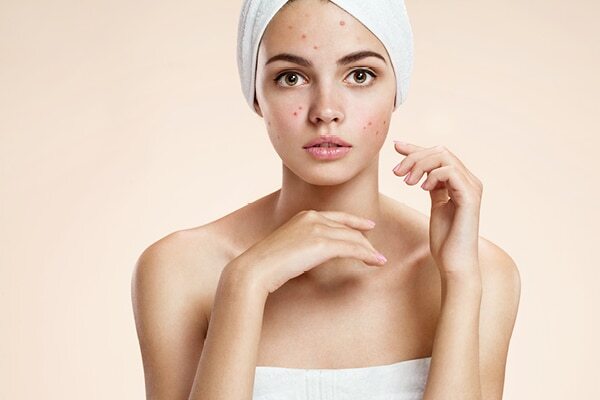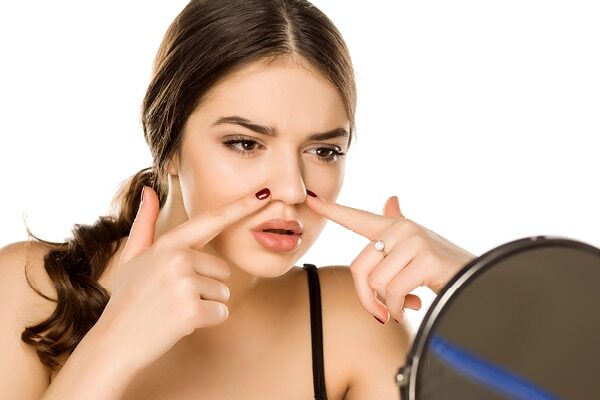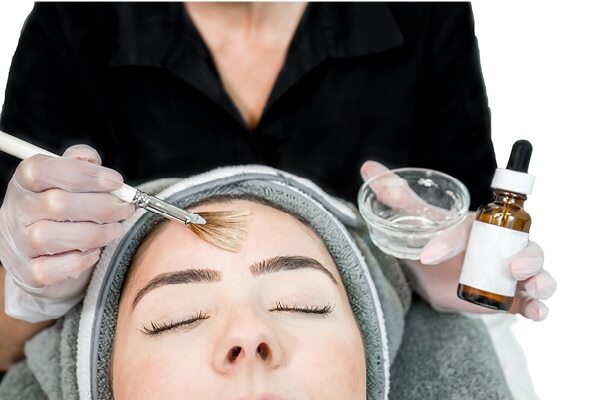When it comes to keeping your skin healthy and clear, you follow every skincare advice that you come across, right from washing your face twice daily to not picking on skin and using good skincare products. Although essential, these habits work only on the surface of the skin. Pollution, stress, UV damage and other environmental factors affect your skin at a deeper level. This leads to uneven skin tone, delayed acne scar healing, clogged pores, fine lines and more. While regular masking and facials may help, if you want healthy-looking flawless skin, you need a stronger formulation that goes into the deeper layers of the skin. Using chemical peels is one of the most effective tools to get rid of blemishes and scars left behind by acne. In fact, using chemical peels on acne can help vanish these scars quickly, as if they never existed. As soon as you hear the term chemical, you want to run away from it, thinking it will be too harsh for your skin. That's not the case with chemical peels. They are gentle on the skin and tough on the scars. Using chemical peels for acne on a regular basis at a dermatologist's clinic can bring you closer to the skin of your dreams. To know more about how chemical peels work and what their benefits are, we got in touch with Dr. Ameesha Mahajan of R M Aesthetics.
01How do chemical peels work on acne?

Chemical peels are an exfoliation treatment which can be done with an AHA or BHA to treat active acne, acne-prone or blemished skin. The beta hydroxy acids used in chemical peels for acne are lipophilic, meaning that they easily target the oil glands responsible for acne and help in the reduction of blackheads, whiteheads, red pimples and even pus-filled acne. During the process, there occurs gentle exfoliation of the skin, this leads to brighter and rejuvenated skin with faded acne scars and spots. It is one of the most popular skin treatments done at many dermatologist's clinics to treat acne and prevent it from coming back.
02Benefits of a chemical peel





Chemical peels are known to target plenty of skin issues like acne, uneven skin tone, scars, spots and improve the overall appearance of the skin. Scroll down to read all the benefits of chemical peels from our expert. Those with stubborn acne spots can get rid of the lesions and dullness with the help of a chemical peel. The salicylic acid peels enter the pilosebaceous gland, which is the acne site, kill the bacteria present there and reduce the sebum production, thus reducing the acne. A chemical peel for acne can be done while you are on anti-acne medication as well. Adding a chemical peel to acne treatment brings about faster and immediate results. The chemical peels for acne are keratolytic, which means that they do not let the skin clog and form blackheads and whiteheads. They also treat existing blackheads and do not allow them to become big acne lesions. If you have visible whiteheads or blackheads, getting a chemical peel can help address the problem as well as prevent breakouts. Acne and breakouts appear and heal within a few days, however, the scars or spots that they leave behind take months to fade. These red and brown spots do not go easily and make your complexion look dull and uneven. Chemical peels are a great way to treat post-acne spots. They reduce the redness and also the stubborn brown spots. So if your brown spots are not fading with topical treatments like ointments, creams and serums, you can ask your dermatologist if you can go for a chemical peel for acne. Acne occurs because the skin tends to clog. Chemical peels are not only a treatment, but can also be used as a preventive treatment by those who tend to develop acne again and again. Think of it as your regular facial, get it done once a month as part of your skincare routine and get far more benefits than you do from a facial. Apart from going for chemical peels, make sure that you are using a non-comedogenic moisturizer to not end up clogging your pores again. Believe it or not, but all chemical peels, even the ones which are more specific to acne, have a rejuvenation effect on the skin overall. So while you may be getting a chemical peel for acne, you also get a much brighter and smoother skin over all. After a chemical peel, you will notice improved skin texture and the pigmentation spots will also have decreased.
03What are the different types of chemical peels?

There are three basic types of chemical peels available at the dermatologist's clinic:
1. Superficial peel:
It is the mildest form of chemical peel for acne and suitable for all skin types.
2. Medium peel:
It penetrates a little deeper into the skin and can cause a burning sensation.
3. Deep peel:
This type of peel is performed only once, as it goes really deeper into the skin. It is not suitable for people with darker skin tones, as it can cause hypopigmentation. Salicylic acid is one of the most common chemical peels for acne. It comes in varying strengths like 20-30% and can be used as a stand-alone peel or a number of the components can be added to it to increase its efficacy like mandelic acid, acetic acid, retinol, glycolic acid, azelaic acid etc.
04What to expect during a chemical peel?

A chemical peel for acne treatment is a simple and short procedure, however, since there are so many different types of peels, the experience can differ from one person to the other. This is how a chemical peel treatment is generally performed. Your skin will be thoroughly cleansed before it begins. Then the dermatologist will choose the right type and power of the peel depending on your concern and apply it all over the face. Multiple coats of peels may be applied according to your skin's condition. Mild tingling and burning sensation can be felt which lasts from a few seconds to minutes. Depending on the agent used for peeling, it can be kept anywhere from 30 seconds to 10 minutes or even as a stay on peel which is removed after 6-8 hours. After the peel, one can expect mild exfoliation or skin peeling for a few days. It is best to avoid a lot of direct sun exposure at least 5-7 days post chemical peel and sunscreen application is mandatory to avoid any possible side effects.
05Are at-home chemical peels safe?

As chemical peels for acne are gaining popularity, their milder variants are being made available in the market for at-home treatment. But are they safe and effective? Here's what you need to know about it. When done at a dermatologist's clinic, higher strength of peels are used which are more effective and since they are done under supervision, they are much safer. But if you want to try the home peels, make sure that they contain a lower percentage of salicylic acid like 2-5%. Do not use them if your skin is very sensitive. Always read the instructions before going ahead with an at-home peel and it is highly recommended to do a patch test behind your ear before doing a full face peel. If you experience a lot of burning sensation with the peel, which is more than that of a face bleach, make sure to remove it quickly and don't keep it for the intended time. While using peels, be sure to apply sunscreen on a regular basis so as to avoid sensitivity issues.








